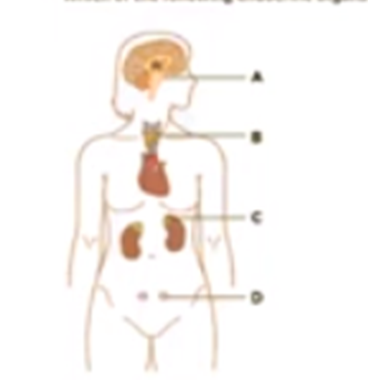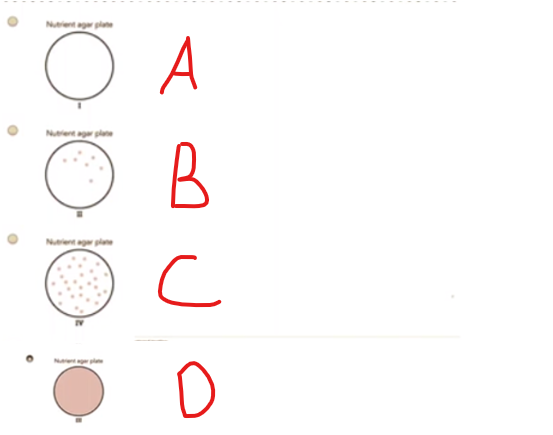Which of the following characteristics of water helps explain why coastal areas experience less dramatic temperature changes during the day?
A. Water has a high specific heat capacity
B. Water is a versatile solvent
C. Water forms covalent bonds with other water molecules
D. Water's adhesive properties prevent evaporation
For those aiming to excel in their ATI TEAS test and secure admission into their desired nursing program, ExamGates offers an invaluable resource. Our platform features practice questions meticulously crafted by tutors who have previously aced the exam themselves. With ExamGates, you can access content that is 100% relevant to the test, accompanied by vivid images and illustrations. Additionally, our platform provides comprehensive explanations for both correct and incorrect answers, empowering you to fully grasp the material and optimize your study efforts. Take the first step towards your nursing aspirations with ExamGates today.
Water has a high specific heat capacity, which means it can absorb and store a large amount of heat energy without significantly changing in temperature. This helps moderate the temperature fluctuations of the air near the coast, as water can store heat during the day and release it at night, or vice versa.
Therefore, the Correct Answer is A.
More Questions on TEAS 7 Science Exam 5
Question 1:
Which of the following is the term given to the sequence of nucleotides that contains the information to make a specific protein molecule?
A. Locus
B. Promoter
C. Operator
D. Gene
The Correct Answer is D.A gene is a segment of DNA that codes for a specific protein or polypeptide.
Question 2:
Which of the following atoms is most likely to become a cation?
A. Oxygen, atomic number 8
B. Fluorine, atomic number 19
C. Helium, atomic number 2
D. Fluorine, atomic number 9
The Correct Answer is D.Fluorine has a high electronegativity, and therefore, it has a strong attraction for electrons and tends to gain electrons to form anions. Therefore, it is more likely to become a cation by losing an electron.
Question 3:
A represents atomic mass and 2 represents an atomic number, which of the following describes an atom after a proton is emitted?
A. A-1,2-1
B. A-1,2+1
C. A,2-1
D. A+1,2-1
The Correct Answer is A.This is because when a proton is emitted from an atom, the atomic mass decreases by one unit, and the atomic number decreases by one unit. The atomic mass is the sum of protons and neutrons in the nucleus, and the atomic number is the number of protons in the nucleus. Therefore, if a proton is lost, both numbers decrease by one.
Question 4:
Which of the following pathways best represents the expected flow of blood from the human heart to an organ?
A. Blood pumped from the heart first enters arterioles that then merge to form arteries that deliver blood to the organ
B. Blood pumped from the heart first enters arteries that then narrow to form arterioles that deliver blood to capillaries of the organ
C. Blood pumped from the heart first enters versus that then narrow to form venules that deliver blood to arteries to the organ
D. Blood pumped from the heart first enters arteries that then narrow to form arterioles that deliver blood to capillaries
The Correct Answer is B.From the heart, blood flows through major arteries, which then branch to give rise to arterioles, which then divide into capillaries that deliver blood to the target organ.
Question 5:
Which of the following substances is excreted by sweat glands in response to the breakdown of proteins and the formation of ammonia?
A. Sebum
B. Water
C. Lysozymes
D. Urea
The Correct Answer is D.Urea is a nitrogenous waste product that is produced when the liver breaks down proteins and amino acids. It is then excreted from the body via sweat.
Question 6:
Which of the following endocrine organs in the diagram below is involved in regulating milk production following childbirth?

A. Pituitary gland
B. Thyroid gland
C. Adrenal glands
D. Ovaries
The Correct Answer is A.The pituitary gland produces prolactin, which regulates milk production
Question 7:
Which of the following is an example of a biological macromolecule?
A. Nucleic acid, Protein
B. Monosaccharide
C. Amino and
D. Protein
The Correct Answer is A.Biological macromolecules are large organic molecules such as carbohydrates, lipids, nucleic acids, and proteins. They are built from smaller molecules, which are linked commonly by covalent bonds, and these can be broken down.
Question 8:
Which of the following organelles is the site of intracellular digestion?
A. Mitochondria
B. Lysosomes
C. Centrosomes
D. Ribosomes
The Correct Answer is B.Lysosomes are membrane-bound organelles that contain lysozymes that are responsible for breaking down waste materials and cellular debris through intracellular digestion. This process helps maintain cellular health and homeostasis by recycling and degrading cellular components.
Question 9:
Escherichia cell is plated on nutrient agar plates that each contain a different type of antibiotic. The shaded area represents growth of the bacteria. Which of the following plates contains bacteria that were most resistant to the antibiotic

A. A
B. B
C. C
D. D
The Correct Answer is C.This is the plate with the most growth despite the presence of antibiotic cover.
Question 10:
Which of the following characteristics of water helps explain why coastal areas experience less dramatic temperature changes during the day?
A. Water has a high specific heat capacity
B. Water is a versatile solvent
C. Water forms covalent bonds with other water molecules
D. Water's adhesive properties prevent evaporation
The Correct Answer is A.Water has a high specific heat capacity, which means it can absorb and store a large amount of heat energy without significantly changing in temperature. This helps moderate the temperature fluctuations of the air near the coast, as water can store heat during the day and release it at night, or vice versa.